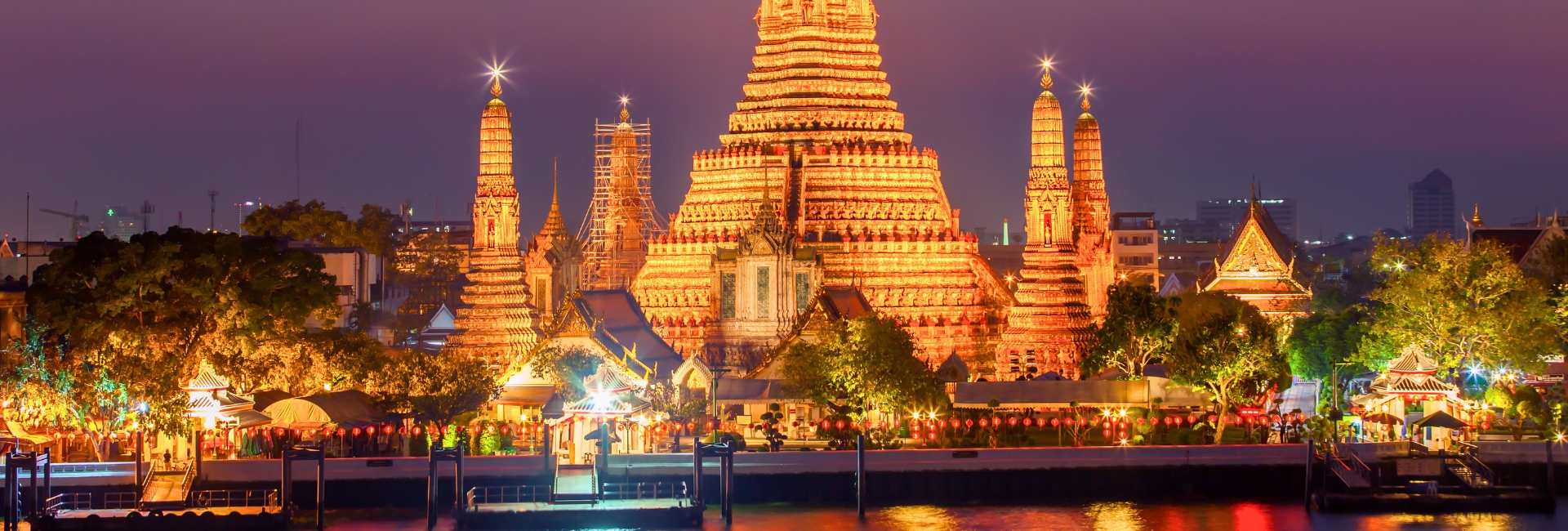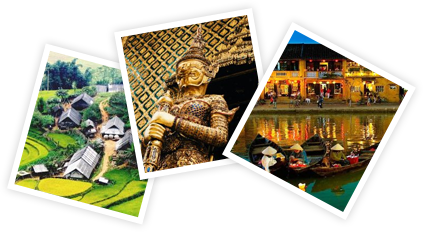Wat Arun, also known as the Temple of Dawn, is one of Bangkok’s most iconic landmarks that draws visitors from across the globe. Situated on the western bank of the Chao Phraya River, this magnificent temple offers a unique blend of spiritual significance and architectural splendor. If you’re planning to visit Bangkok in 2025, here’s everything you need to know about getting to Wat Arun and making the most of your visit.
Why is Wat Arun so famous?
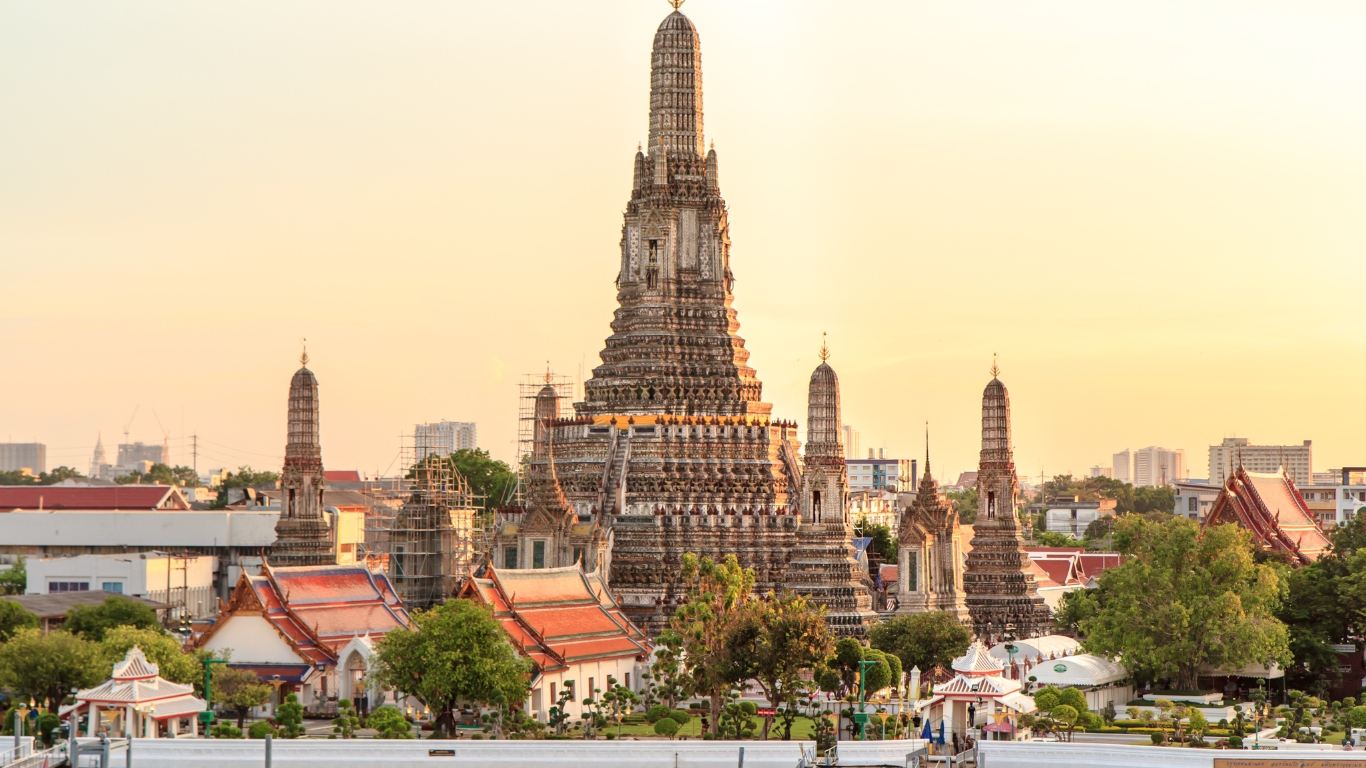
Wat Arun’s remarkable beauty and historical significance have made it one of Thailand’s most recognized landmarks, appearing on Thai currency and attracting millions of visitors annually.
Before
Wat Arun has existed since at least the 17th century during the Ayutthaya Kingdom, when it was known as Wat Makok after the village in which it was built. The temple gained prominence during King Taksin’s reign (1767-1782) when he established his new capital of Thonburi near the temple following the fall of Ayutthaya. During this period, the temple was renamed Wat Chaeng and became particularly significant as it temporarily housed Thailand’s most sacred religious icon, the Emerald Buddha, before it was transferred to Wat Phra Kaew in 1785. The temple’s iconic central prang (spire) that we see today was constructed during the reigns of Rama II and Rama III, with completion in 1851 after nine years of continued construction.
Nowadays
Today, Wat Arun stands as a testament to Thailand’s rich cultural heritage and architectural prowess. Its most distinctive feature is the 82-meter tall central prang, which symbolizes Mount Meru from Hindu cosmology—considered the center of all physical, metaphysical, and spiritual universes. What makes the temple truly unique is its intricate decoration with colorful porcelain shards and seashells, which were originally used as ballast by Chinese trading ships. This decorative technique creates a spectacular effect when the first light of dawn reflects against the temple’s surface, giving it a pearly iridescence and justifying its name “Temple of Dawn.” Unlike many other Thai temples, Wat Arun allows visitors to climb its main staircase, offering panoramic views of the Chao Phraya River, the Grand Palace, and Wat Pho on the opposite bank, making it a must-visit destination for travelers seeking both beauty and cultural significance.
How to get there?
Wat Arun is located on the western bank (Thonburi side) of the Chao Phraya River, opposite the Grand Palace and Wat Pho. Its precise location makes it accessible via 2 main methods, one by road 100% and one combine between road and water way, each offering a different experience of Bangkok.
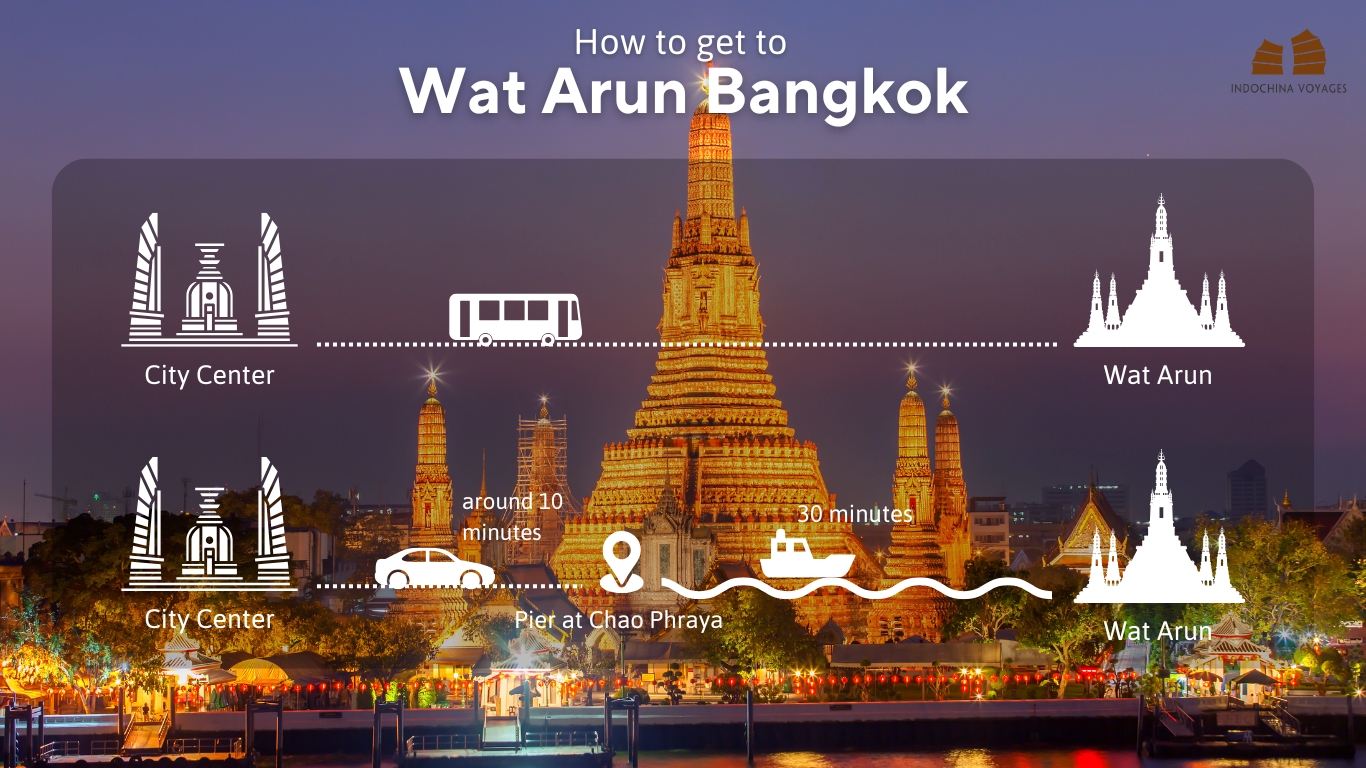
100% by road
- Travel time: 30-60 minutes (depending on traffic and starting location)
- Cost: 100-300 baht for taxi or ride-sharing services
Getting to Wat Arun entirely by road is straightforward but requires navigating Bangkok’s often congested streets. From central Bangkok, you can take a taxi, Grab (Southeast Asia’s equivalent to Uber), or tuk-tuk directly to the temple. When using taxis, always insist on using the meter to avoid overcharging. For ride-sharing services like Grab, prices are fixed before your journey begins, offering peace of mind.
If you’re staying near a BTS (Skytrain) or MRT (subway) station, you can use public transport to get closer to the area and then take a short taxi ride to complete your journey. However, since Wat Arun is on the Thonburi side of the river, there’s no direct BTS or MRT connection right to the temple.
The benefit of traveling 100% by road is convenience and flexibility with your schedule. You won’t need to adhere to boat timetables, and you can visit at your own pace. However, you’ll miss out on the scenic river experience that many travelers consider an essential part of visiting Bangkok’s riverside attractions.
50% by road and 50% by boat
- Travel time: 45-75 minutes total (including waiting time for the ferry)
- Road transport to pier: 5-10 minutes
- Boat crossing: Around 30 minutes
- Cost: 100-200 baht for taxi to pier + 5-20 baht for ferry crossing OR 150-200 baht for tourist boat
This combination approach offers the best of both worlds and is often the most recommended way to reach Wat Arun. First, take a taxi, Grab, or public transportation to one of the main piers on the eastern side of the Chao Phraya River. The most convenient options are:
- Tha Tien Pier (closest to Wat Pho and Grand Palace)
- Maharaj Pier
- Sathorn (Central) Pier (connected to Saphan Taksin BTS station)
From any of these piers, you can take a cross-river ferry directly to Wat Arun. These small ferries run frequently throughout the day (roughly every 10-15 minutes) and cost only 5-20 baht per person. The crossing itself takes 30 minutes but offers spectacular views of the temple as you approach from the water.
Alternatively, you can purchase tourist boat passes for around 150-200 baht per person, which allow unlimited rides for the day along the Chao Phraya River’s tourist boat route. This is an excellent option if you plan to visit multiple riverside attractions in one day, such as the Grand Palace, Wat Pho, and Wat Arun.
The river journey adds a magical dimension to your visit, as you’ll see Bangkok from a different perspective. The approach to Wat Arun by water is particularly stunning, especially in the early morning or late afternoon when the light creates beautiful effects on the temple’s decorative surface.
If you prefer a worry-free experience with everything taken care of from A to Z, including transportation, entrance fees, and a knowledgeable guide to explain the historical and cultural significance of Wat Arun, please contact us for more information about our complete Wat Arun tour packages.
Is it worth going inside Wat Arun?
Absolutely! While many tourists admire Wat Arun only from across the river or take photos from outside, exploring the interior grounds and climbing the central prang offers a much more enriching experience. The interior reveals intricate details of Thai craftsmanship, Buddhist symbolism, and panoramic views that simply cannot be appreciated from afar.
Admire the outstanding architecture of the temple
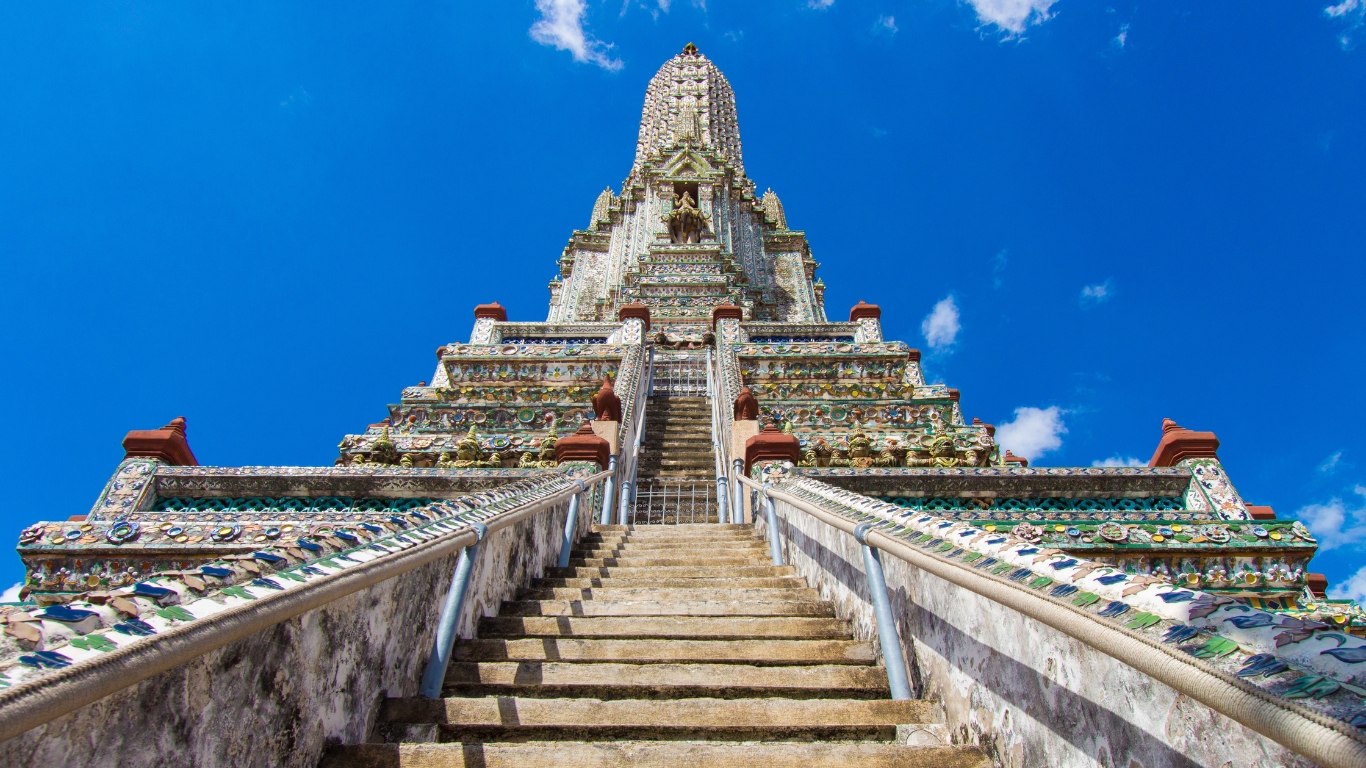
Inside Wat Arun, you’ll discover the magnificent Ordination Hall housing the Niramitr Buddha image, reportedly designed by King Rama II. The hall features stunning murals created during King Rama V’s reign, depicting the life of Buddha. The most impressive feature is undoubtedly the central prang, which symbolizes Mount Meru in Hindu cosmology.
As you explore, take time to admire the detailed porcelain and seashell decorations that adorn the spires. These weren’t merely decorative choices—they were originally ballast from Chinese trading ships that visited Thai ports centuries ago. The four smaller satellite prangs surrounding the central spire are devoted to the wind god, Phra Phai.
At the base of the prangs, you’ll find various figures of ancient Chinese soldiers and animals. The second terrace features four statues of the Hindu god Indra riding on Erawan, the three-headed elephant. This blending of Buddhist and Hindu iconography demonstrates Thailand’s complex religious heritage.
Wearing traditional Thai costume
For a truly memorable experience, consider renting traditional Thai costumes available at the temple. This popular activity allows visitors to immerse themselves in Thai culture while creating stunning photos with Wat Arun as the backdrop.
Rental shops within and near the temple offer a variety of traditional Thai outfits for both men and women. Women can choose from beautiful silk dresses in vibrant colors, while men can don traditional Thai formal wear. Prices typically range from 300-500 baht for a rental lasting 1-2 hours, which includes professional assistance with dressing properly.
Not only does wearing traditional costume enhance your photos, but it also offers deeper appreciation for Thai culture and provides a respectful nod to the temple’s historical significance. Many visitors consider this experience a highlight of their visit to Wat Arun.
Witness the marvelous dawn at the temple

There’s a reason Wat Arun is called the Temple of Dawn. Arriving early to witness sunrise at the temple provides one of Bangkok’s most magical experiences. As the first light breaks across the horizon, it bathes the temple’s pearly surface in a golden glow, creating an ethereal effect that showcases why the temple is named after Aruna, the Hindu god of dawn.
For the best experience, arrive at the temple grounds shortly before sunrise (around 5:30-6:00 AM during most of the year). While the interior areas may not yet be open, the exterior views during dawn are absolutely spectacular. Photographers particularly appreciate this time of day, as the rising sun creates dramatic lighting on the temple’s distinctive prangs.
If early morning doesn’t fit your schedule, sunset offers another beautiful perspective, with the temple silhouetted against the colorful evening sky. Either timing allows you to experience the temple’s special relationship with light that has captivated visitors for generations.
>> Maybe you’ll love our Bangkok Tour which include Wat Arun:
- Full Day Excursion Of Bangkok
- Classic Thailand 7 Days
- Bangkok To Chiang Mai 4 Days
- Central Thailand 3 Days
Is there a dress code for Wat Arun?
Yes, like all Buddhist temples in Thailand, Wat Arun maintains a strict dress code that visitors must follow as a sign of respect. The temple is an active place of worship, not just a tourist attraction, so appropriate attire is mandatory.
When visiting Wat Arun, both men and women should wear clothing that covers the shoulders and knees. This means:
- No sleeveless shirts, tank tops, or crop tops
- No shorts or skirts that end above the knee
- No see-through clothing or items with offensive images/text
- No torn or excessively tight clothing
Footwear is allowed in the temple grounds, but you’ll need to remove your shoes before entering any buildings with Buddha images. It’s advisable to wear shoes that slip on and off easily to make this process more convenient.
If you arrive at Wat Arun and realize your clothing doesn’t meet these requirements, don’t worry. You can rent clothes to cover up at the temple for a small fee (typically 20-50 baht), you can rent sarongs, scarves, or long-sleeved cover-ups right at the entrance. These rental services are provided specifically to ensure that all visitors can enjoy the temple while maintaining proper respect.
Remember that these dress code requirements are not merely suggestions but strict rules. Temple guards may deny entry to visitors who are not dressed appropriately and refuse to use the cover-up options available.
Further more before going
Opening Hours and Entrance Fee
Opening Hours:
- Wat Arun is open daily from 8:00 AM to 6:00 PM.
- The best times to visit are early morning (8:00-10:00 AM) to avoid crowds or late afternoon (4:00-6:00 PM) for beautiful lighting.
Entrance Fee (as of 2025):
- Adults: 200 baht
- Children (under a certain height/age): Free
- Thai nationals: Free
The entrance fee includes access to all areas of the temple grounds, including the opportunity to climb the central prang for panoramic views. Keep your ticket with you at all times, as you may need to show it while moving between different sections of the temple complex.
Travel Tips Before Going
- Avoid Scams: Be wary of anyone approaching you on the street claiming the temple is closed or offering special “cheap” tours. It’s not typical in Thai culture for legitimate guides to approach tourists on the street.
- Climbing Safety: The steps on the central prang are extremely steep and narrow. Wear comfortable, secure footwear and be cautious, especially when descending. Those with mobility issues or fear of heights may want to enjoy the temple from ground level.
- Sun Protection: Bangkok’s heat can be intense, especially in the temple’s open areas. Bring a hat, sunglasses, and sunscreen. Drinking water is essential and can be purchased at shops near the entrance.
- Photography: While photography is generally permitted throughout Wat Arun, be respectful when taking photos, especially of monks or people in prayer. The best lighting for photography is during early morning or late afternoon when the sun creates dramatic shadows on the temple’s textured surface.
- Combined Visits: Consider combining your visit to Wat Arun with nearby attractions like Wat Pho and the Grand Palace, which are just across the river. A tourist boat day pass makes this circuit easy and enjoyable.
- Local Guide: Consider hiring a local guide (available at the entrance) to enhance your understanding of the temple’s history, architecture, and religious significance. English-speaking guides typically charge 200-400 baht for a 45-60 minute tour.
Wat Arun stands as one of Bangkok’s most majestic temples, offering visitors not just stunning architecture but a glimpse into Thailand’s rich cultural and religious heritage. Whether you choose to arrive by road or combine your journey with a scenic boat ride across the Chao Phraya River, the Temple of Dawn rewards visitors with unforgettable experiences.
To make the most of your visit, remember to dress respectfully, arrive during optimal hours (early morning or late afternoon), and take time to explore both the exterior and interior grounds. The 200 baht entrance fee is more than worthwhile for the opportunity to climb the central prang, admire the intricate decorations, and perhaps wear traditional Thai costume for memorable photographs.
As Thailand continues to welcome tourists in 2025, Wat Arun remains a must-see destination that combines spiritual significance with architectural wonder. By following the guidelines in this guide, you’ll be well-prepared to experience all that this magnificent temple has to offer.
>> Are you going to travel to Bangkok? Read more: Discover Hidden Gems: 9 Unusual Things To Do in Bangkok & Travel Guide
Indochina Voyages stands out as one of the best Southeast Asia Tour Companies, specializing in crafting personalized private packages for discerning travelers not just providing single transfer items from Cambodia to Phu Quoc. Whether you choose to explore our pre-designed tours, meticulously curated by our travel experts, or opt to customize your own itinerary, we guarantee to deliver the finest and most suitable options for every aspect of your journey, from accommodation to transportation.
Thuy Dang – From Indochina Voyages Team

